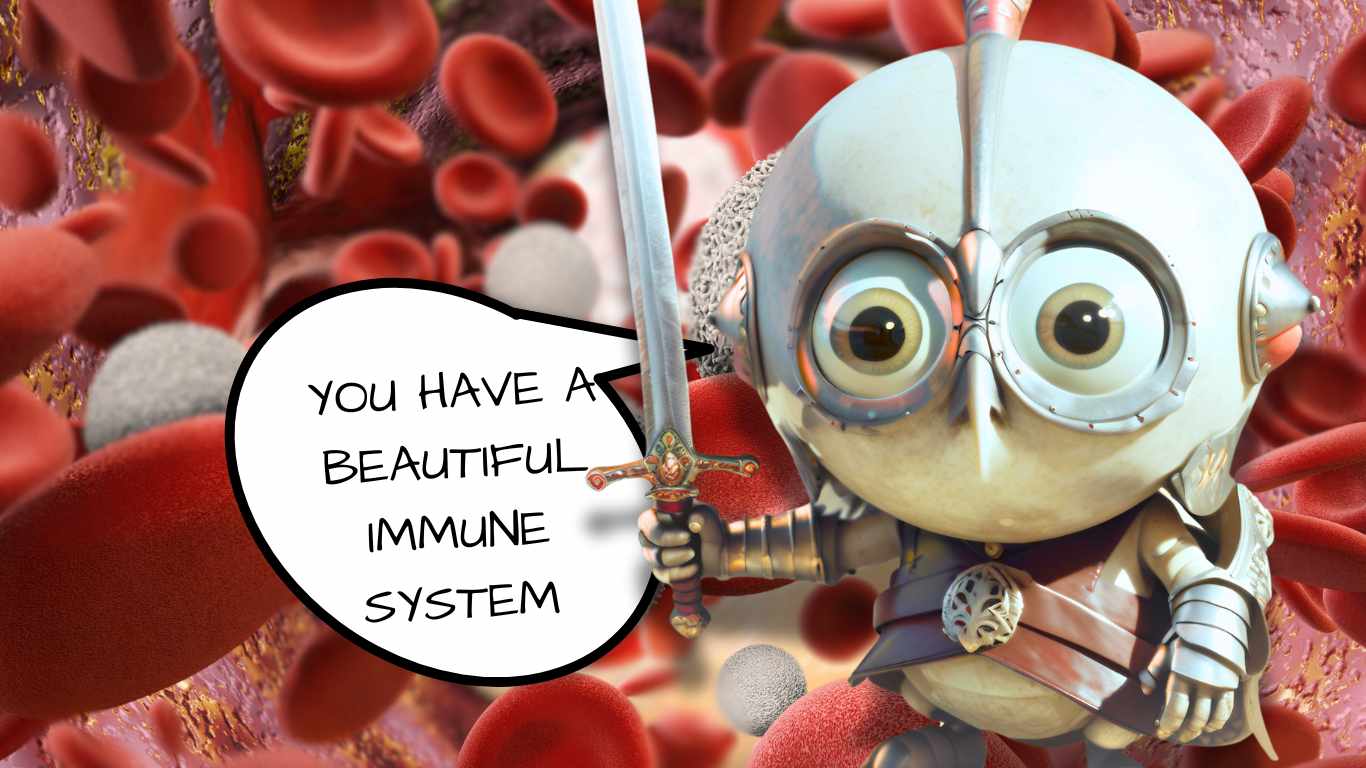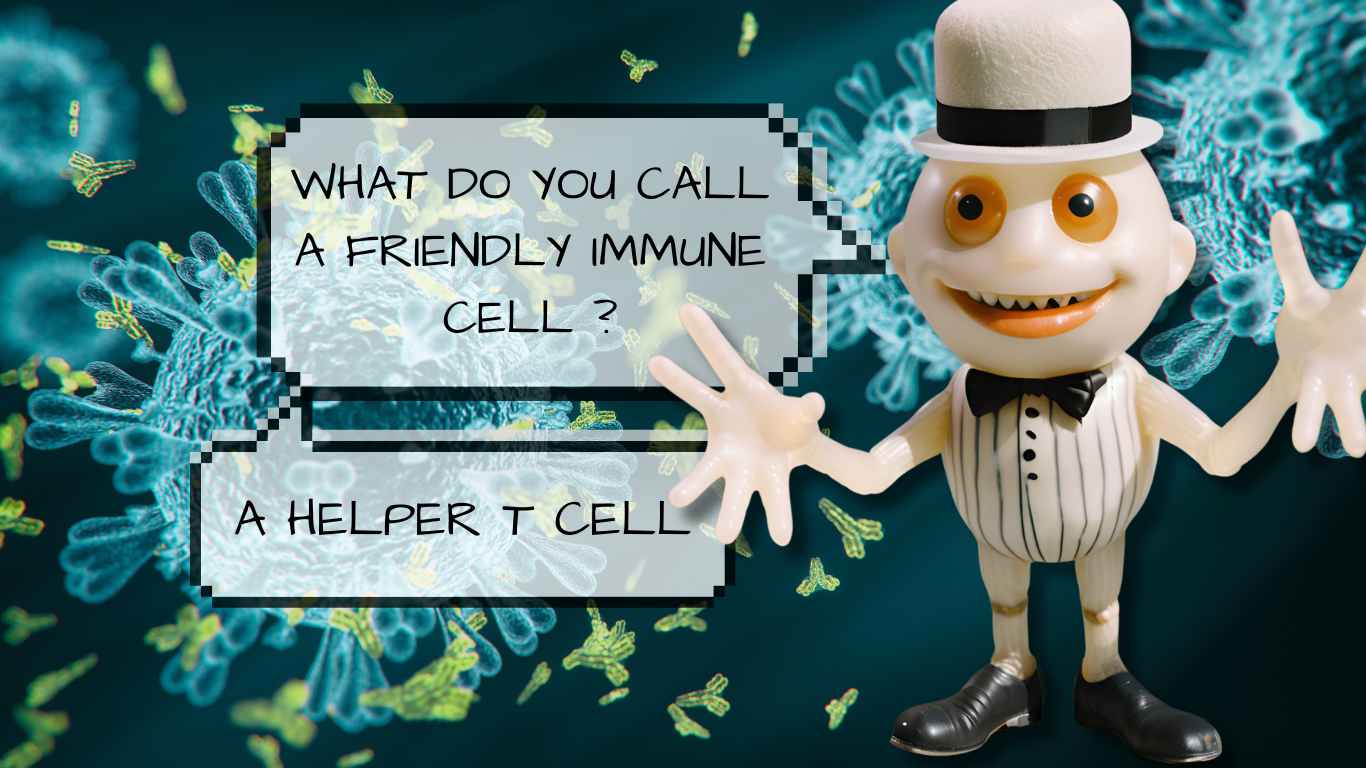In the earlier article, we discussed the Humoral immunity. Conversely, this article is about the remaining aspect of the Adaptive immune system, i.e. Adaptive Immune response via Immune Cells. In this article, we will explore the types of cells responsible for cell mediated adaptive immunity. We will also look at their respective roles.
When talking about cell mediated Immunity, there are 3 main classes of cells involved.
- Cytotoxic T cells (Tc)
- Helper T cells (Th)
- Th1
- Th2
- Regulatory T cells.
Cluster of Differentiation
The lymphocytes are morphologically indistinguishable microscopically. Still, immunologists later discovered a way to spot them. They observed that different groups of monoclonal antibodies attach to the same antigen on a leukocyte. Since these molecules cluster together to differentiate various types of lymphocytes, scientists named them Cluster of Differentiation molecules (CD). They also numbered these CD molecules in the order of their discovery. The first discovered CD molecule is CD1. Knowing all CD molecules is not necessary. Yet, it's important to remember a few key CD molecules to better understand immunology. Here are some of the most significant and unique CD molecules to keep in mind.
| Cell Type | CD Marker |
|---|---|
| B Cell | CD19 |
| T Helper Cell | CD4+ |
| Cytotoxic T Cell | CD8+ |
| NK Cell | CD56 |
These cells will bring about the cell mediated immunity in 3 phases:
- Antigen Presentation,
- MHC-TCR Connection
- Effector Phase.
Antigen Presentation
Antigens are processed and presented to the T lymphocytes for recognition. Afterwards, these processed (cooked) antigens are presented on a (plate) MHC molecules.
Major Histocompatibility complex (MHC) molecules are cell surface proteins essential for the immune system to recognize and respond to foreign antigens. The term “histocompatibility” highlights its role in tissue compatibility, and “complex” reflects the cluster of genes on chromosome 6 in humans that encode these proteins.
There are two main types of MHC molecules:
- MHC1 and
- MHC 2.
MHC molecules are present in all mammalian species. The MHC molecules present in humans are distinct from the ones in other animals. Hence, the human MHC molecules are known as Human Leukocyte Antigens (HLA)
MHC 1
First, let's talk about MHC class I molecules. MHC 1 is present in all nucleated cells, and they are active against intracellular pathogens. These guys deal with proteins made inside our cells, like those produced by viruses. The proteasome breaks down these proteins into small pieces, or peptides. After that, a transporter known as TAP shuttles these peptides into the endoplasmic reticulum (ER).
In the ER, TAP hands these peptides to MHC class 1 molecules, which are connected to helper proteins. Once an MHC class I molecule latches onto a peptide, TAP and the helper proteins step back. The peptide-MHC 1 combo gets packed into a vesicle and moves through the Golgi apparatus to the cell surface. Finally, when the vesicle merges with the cell membrane, the peptide-MHC I complex displays on the surface, ready for CD8 T cells to recognize and respond to.
The main job of these pathways is to help our immune system recognize the threat. First, they make sure the immune system mounts the right defense. For example, MHC class I molecules show off antigens from inside the cell, known as endogenous antigens. These antigens can be regular cell proteins, new proteins from cancer cells, or bits of viruses from infected cells. As a result, the immune system can detect and respond to the threat appropriately.
MHC 2
Now, let's look at MHC class II molecules. These deal with stuff coming from outside the cell, like bacteria. Cells with endocytotic activity (think of them as cells that can engulf stuff) take in these external antigens. Inside an endosome, these antigens meet up with MHC class II molecules. Initially, a small molecule blocks the binding site of MHC class II, but a helper protein in the endosome helps swap this blocker out for an antigen.
The vesicle carrying this new antigen-MHC II complex then heads to the cell surface. Once it fuses with the cell membrane, the complex is displayed, ready for CD4 T helper cells to see and act on.
MHC class II molecules present antigens from outside the cell, called exogenous antigens, like parts of bacteria.
MHC-TCR Connection
The MHC molecules presented on the cell surface connects with a T Cell Receptor (TCR) that can recognize the antigens presented on it. The connection between MHC and TCR is crucial for immune response activation. The Peptide antigen binds to the MHC molecule in a 'Peptide Binding Cleft (PBC)'. On the other hand, The raised edges of the cleft are the places where the MHC molecule binds to the TCR, facilitating this interaction.
Several molecules are involved in this process:
- the antigen binds to the TCR,
- B7 co-stimulator binds to CD28, and
- MHC binds to either CD8+ or CD4+ T cells.
- Additionally, ligands bind to adhesins like integrins.
When a TCR recognizes an antigen, it transmits the first signal to the T cell. Yet, a single TCR-antigen complex can't start this signal; two or more TCRs must be cross-linked to start signalling. The CD28 molecule on T cells recognizes the B7 co-stimulator on antigen-presenting cells (APCs), providing the second signal necessary for T cell activation. Without this second signal, T cell unresponsiveness (anergy) occurs. Microbes and cytokines produced during the innate immune response induce the expression of co-stimulators.
Adhesion molecules on cells recognize their ligands on APCs, stabilizing the binding of T cells to APCs. The most important adhesion molecule is integrin, which strengthens the binding between T cells and APCs and enhances the migration of effector T cells from circulation to infection sites. Integrin-mediated binding is critical for T cell function, ensuring a robust immune response.
Effector Phase
When they get activated, T cells will proliferate and form thousands of clones of that exact same T cell. Some of these clones will morph into Effector T cells which are Cytotoxic and armed to attack the antigen. Meanwhile, other clones would differentiate to become memory T cells. These cells will hide away in the lymph nodes from months to years. There, they wait for an antigen with that exact epitope to show up. Once it shows up, they attack right away. They do this without waiting for the immune system to go through this whole process all over again.
Activated T cells move to the site of infection
After activation in the lymph nodes, T cells (particularly cytotoxic T cells and helper T cells) migrate to the site where pathogens or infected cells are located. This movement is directed by chemokines and adhesion molecules that guide the T cells to the infected tissues.
Different types of T cell subsets are activated according to the type of Ag (antigen):
Depending on the nature of the antigen (e.g., intracellular bacteria, viruses, or tumor cells), different subsets of T cells are activated:
- CD8+ cytotoxic T lymphocytes (CTLs): Respond to intracellular pathogens (like viruses) and target infected cells for destruction.
- CD4+ helper T cells (Th subsets): Depending on the cytokines present, they differentiate into subsets like Th1 (for intracellular pathogens) or Th2 (for extracellular parasites) to coordinate specific immune responses.
Different T cell subsets have different actions:
- Cytotoxic T cells (CD8+): Kill infected or abnormal cells directly through mechanisms like perforin/granzyme release, inducing apoptosis (cell death).
- Helper T cells (CD4+): Secrete cytokines to activate macrophages (Th1), enhance B cell responses (Th2), or support other immune functions.
- Regulatory T cells (Tregs): Control immune responses to prevent excessive inflammation and autoimmunity.
The type of T cell subset activated depends on the type of antigen.
Activated T Helper cells can signal B cells by binding of the T cell receptor with the MCH II molecule, along with the epitope. This will stimulate the production of antibodies, This is discussed in more detail in the Humoral immunity article.
Antibody-dependent cell-mediated cytotoxicity (ADCC).
First, an antibody attaches to a specific target cell, like a virus-infected cell, using its antigen-binding site. Meanwhile, the other end of the antibody, called the Fc portion, sticks out. At this point, cytotoxic cells, like natural killer (NK) cells, have Fc receptors that recognize and bind to this Fc portion. In this way, the antibody acts like a guide, providing the specificity to target the right cell. Once this happens, the cytotoxic cells release perforin to poke holes in the target cell and granzymes to trigger cell death. Ultimately, it’s like the immune system’s version of a guided missile strike—precise and lethal!




